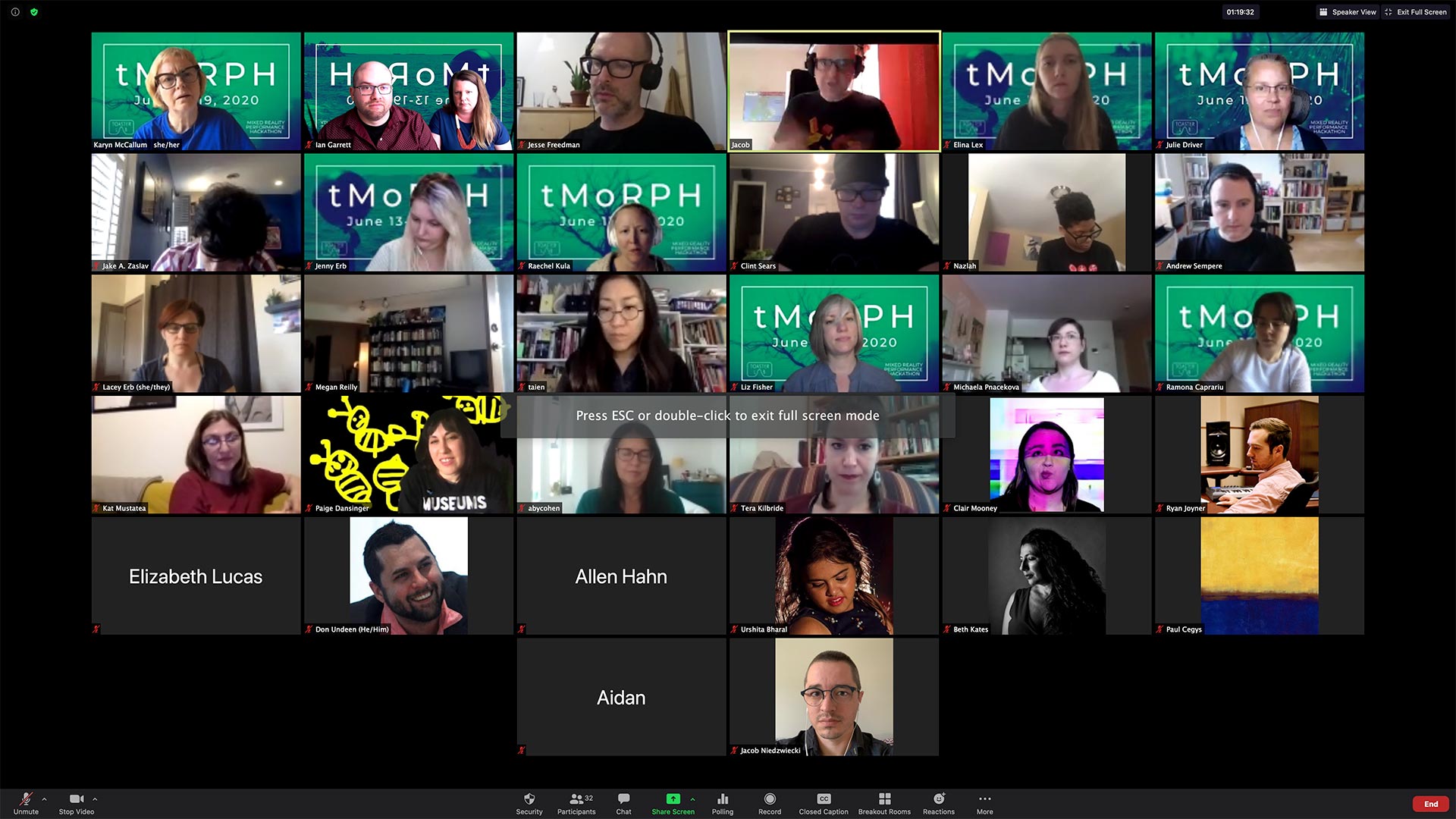Directed by Autumn Smith at Hart House Theatre, original script by Joan Littlewood and The Theatre Workshop
Presented Feb 28 - Mar 7, 2020 at Hart House Theatre, Toronto, Ontario, Canada
Summary of Project:
Traditional theatrical presentation of a licensed script. Artistic concept includes framing the performers as playing a VR video game. Projection design features prominently and involves motion capture animation of the John Bull character. Voiced lines were performed (pre-recorded) by the Director, Autumn Smith, and sound manipulated along with application of a custom avatar to create a floating head speaking through screens on stage.
Description of User Experience:
Audience seating in 430 person theatre with proscenium stage. Projection screens positioned as full upstage backdrop and with side panels midway down stage. The performance was not interactive, users had no control over the experience. Side panels supported the production’s video game design concept.
Mixed Reality Content Type:
Pre-recorded motion capture (mo-cap) video, served via WatchOut.
How Traditional Theatre Techniques Have Been Incorporated:
This project was primarily a traditional theatre production and the VR/AR work was incorporated as a feature of the Projection Design component.
Unique Innovations:
Motion capture technology workflow allowed the director to perform the John Bull (narrator) role without extensive video production expense/ need for live performance.
Identified Best Practices for Mixed Reality Production:
- Performers had access to digital content in rehearsal.
- The separation of Projection Designer and Technician was significant. Having more than one person implementing the XR component was really helpful.
- Technician spent a lot of time in rehearsal helping ‘the room’ understand and embrace the technology.
- Projection designers, technicians, and other folks with technical expertise should be in the room for as long a period as possible. This will help the director to brainstorm and troubleshoot technical issues.
- When putting together teams for work involving complex technical components, it is important to hire people who demonstrate flexibility, kindness, and patience.
- Collaborative devised theatre methods of creation are ideal for hybrid performances that require a high engagement with technology. The work can no longer revolve around one piece of text.
- It would have been great to have the motion-capture head prepared earlier for the actors, in order to mitigate technical problems, and so that the actors could develop their performances in relation to this technical element. The quick timeline did not allow for this to happen, but artists are advised to introduce technical elements into the rehearsal process as early as possible.
- As with all theatrical work, trust is a valuable component in Mixed Reality Performance. Trust can be cultivated by sharing a clear vision regarding the role of technology in the storytelling.
Tips & Tricks:
- Use green clothing as a way to mask out the body – this was used to get the floating head feature.
- Use free trial software where ever possible, especially for small components, as a way to conserve budget resources.

